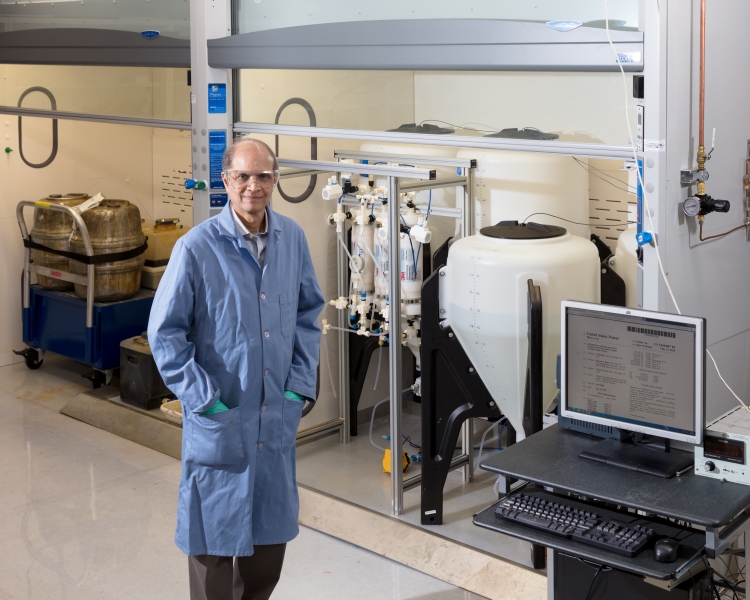Less than 5% of spent lithium-ion batteries in the United States are recycled. Several critical elements are used in the lithium-ion batteries that power electric vehicles, such as cobalt, nickel, lithium and manganese. Using the Membrane Solvent Extraction process, or MSX, developed by ORNL scientists as part of the Department of Energy’s Critical Materials Institute, or CMI, these elements can be recovered in a highly pure form that can be reformulated into battery composition for new devices.
After removing recyclable plastics and metals from end-of-life batteries, a sludgy mix of mostly lithium-ion battery elements known as “black mass” is left.
“Half of the costs in lithium-ion battery recycling are in the logistics of shipping that material to processors,” said Preston Bryant, founder and CEO of Momentum. “The MSX breakthrough allows us to build processing plants at the sources of the waste, eliminating logistics hurdles while increasing material recovery rates as compared to traditional smelters.”
Ramesh Bhave, ORNL senior researcher and project leader for membrane-based rare earth elements separation supported by CMI, led the development of the MSX technology. His team includes post-doctoral researchers Syed Islam and Priyesh Wagh.
As more consumers embrace electric vehicles, developing efficient technologies to capture and reuse critical elements from spent batteries will be important to maintaining adequate supply without dependence on overseas mining and processing of critical materials.
“There is an urgent need for having a domestic resource for some of these elements. There is little to no mining, downstream refining or recycling in the U.S. for these elements and the traditional technology is quite complex and generates a lot of waste,” Bhave said. “Our technology contributes to a circular economy. We completely recycle end-of-life products without generating hazardous waste.”
MSX processing uses a limited amount of energy, labor and chemical solvents and can be applied to a variety of critical material recovery efforts.
“This technology recovers 99.9% pure lithium, nickel, cobalt and manganese oxides or sulfates depending on battery materials manufacturers’ preferences and requirements,” Bryant said. “MSX is a closed-loop process; it is cheap, modular, energy efficient and produces nearly zero waste.”
Momentum has licensed similar ORNL technologies for the recovery of other rare earth elements. A facility equipped for MSX can recover a range of elements from magnets, batteries, and other devices. CMI researchers continue to explore the MSX technology for other critical materials recovery.
ORNL’s Technology Transfer Office negotiated the agreement.
DOE’s Advanced Manufacturing Office, part of the Office of Energy Efficiency and Renewable Energy, funded the initial research through the Critical Materials Institute. Additional funding was provided by DOE’s Technology Commercialization Fund and by Momentum Technologies through a Strategic Partnership Project agreement.
About the Critical Materials Institute
The Critical Materials Institute, an Energy Innovation Hub led by DOE’s Ames Laboratory and supported by the Office of Energy Efficiency and Renewable Energy’s Advanced Manufacturing Office, supports early-stage research to advance innovation in U.S. manufacturing and promote American economic growth and energy security. CMI seeks ways to eliminate and reduce reliance on rare earth metals and other materials critical to the success of clean energy technologies and make better use of materials. ORNL has been an active CMI team member since the hub began in 2013, leading many CMI projects. Since inception, CMI research has been awarded 18 U.S. patents.
ORNL is managed by UT-Battelle for the U.S. Department of Energy’s Office of Science, the single largest supporter of basic research in the physical sciences in the United States. DOE’s Office of Science is working to address some of the most pressing challenges of our time. For more information, please visit https://energy.gov/science.




